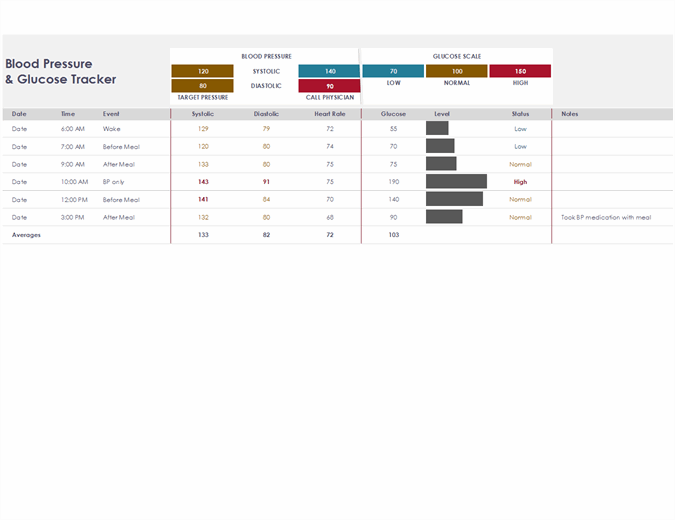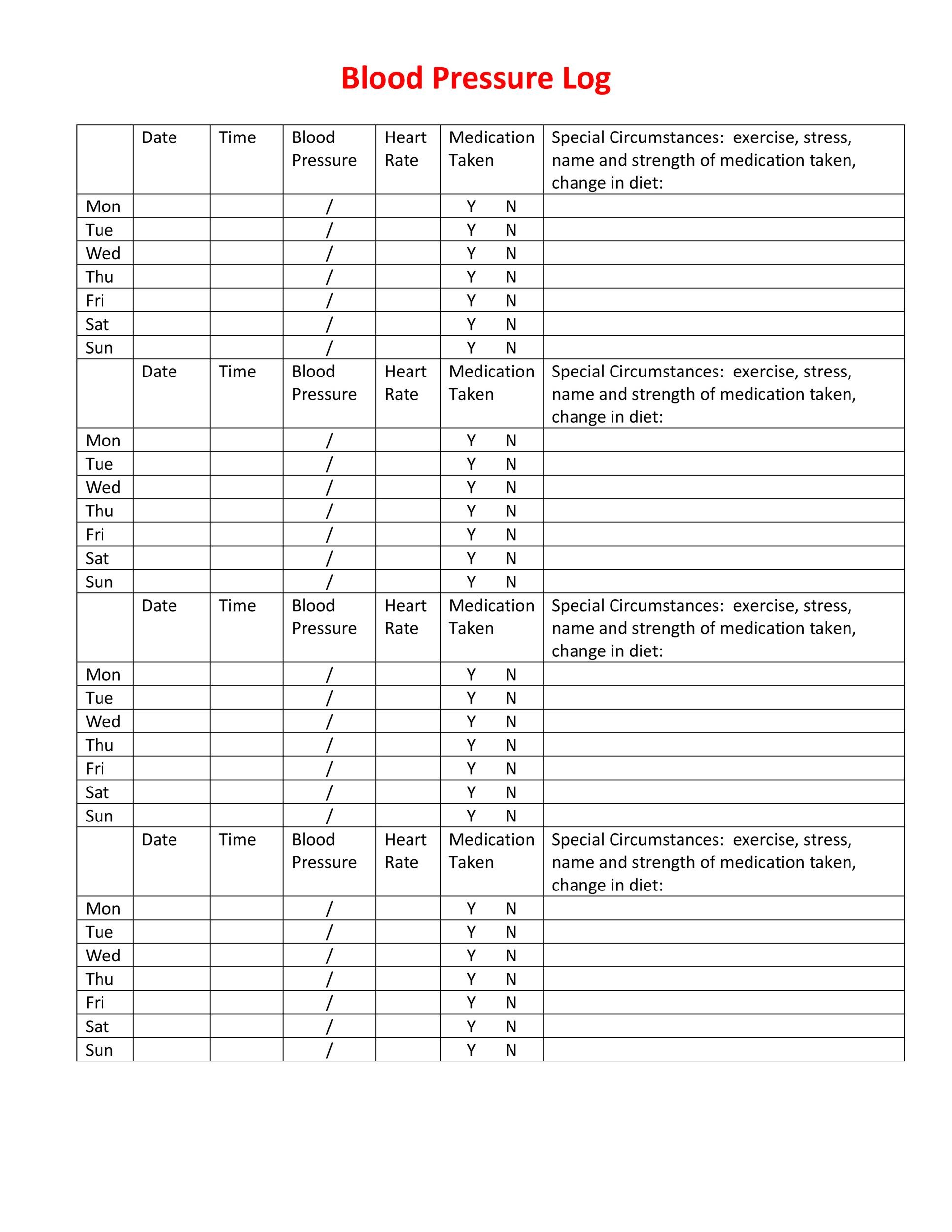
The following examples will show you what information to include if you are making your own basic or detailed blood pressure chart. You may not remember those concerns in a month or two when you see your doctor.

If something worries you, your doctor should know about it. Do not leave out any details that you feel may be important if there is not enough space to write them. If your chart’s note section is too small for you to include all relevant information, make a note to adjust the field size on your computer for next month before you print it out again. As soon as you are finished, write down your blood pressure numbers on your chart along with any relevant notes.Ĩ. Do not talk, sit still and avoid eating or drinking while you measure your blood pressure. While taking your blood pressure at the same time each day is part of keeping a charting routine, you also need to follow a routine of the same steps. For example, some people use a wrist cuff if they can no longer use a cuff on their upper arm.ħ. Also, make a note of any changes if you switch to a different type of cuff. If you injure that arm or just had blood drawn, take your blood pressure on the other arm. Try to measure your blood pressure on the same arm each day. For dangerously high or low numbers, call 911.Ħ. If your numbers are too high or too low, call your doctor. A diastolic number of 60 or below is too low. If the number is above 90, it is too high. The bottom number is the diastolic number. Any number above that is considered high blood pressure, and a systolic number below 90 is considered dangerously low. Your top number is called the systolic number, and it should not be above 140. Part of proper charting is knowing when to take action. Determine what you can do to prevent that in the coming months.ĥ. At the end of each month, read your chart to identify any higher-than-usual readings and what might have triggered them. Are you stressed out about something? Do you feel anxious or depressed? Anything from taking your blood pressure after waking up from a sleep terror to continually feeling stressed about finances can affect your reading.Ĥ. Write about what you are feeling when you record your blood pressure. Did you eat it the night before a high reading? Taking your blood pressure after a heavily salted meal can result in a higher reading.ģ. If you break your diet from time to time, be sure to write down what you ate in your notes. Provide information about dietary changes. Did you just get back from running? Did you fall down or get sick? In the notes section of your log, be sure to write down any preceding activity that could affect your blood pressure.Ģ. These steps will help you make the most of your chart.ġ.

As a finished product, your chart should show your doctor why changes happen. Also, think from the perspective of your doctor as you make your chart and write on it. The overall goal of using a blood pressure chart is improving your health.

Tips For Making A Blood Pressure ChartĮvery person’s needs are different when it comes to blood pressure charting, and you may need to do more than take a daily reading. If you are monitoring your numbers because your pressure tends to be too low, you may feel faint or dizzy when it drops. The chart is also helpful to your doctor for improving health care delivery. If you combine charting with a healthier lifestyle, you will probably see better numbers. A blood pressure chart helps you track your daily readings. This means that dangerously high blood pressure often happens without any physical symptoms, and regular monitoring may be the only way to catch it. Did your doctor tell you to watch your blood pressure because it was too high during your last few visits? High blood pressure is commonly called the silent killer.


 0 kommentar(er)
0 kommentar(er)
